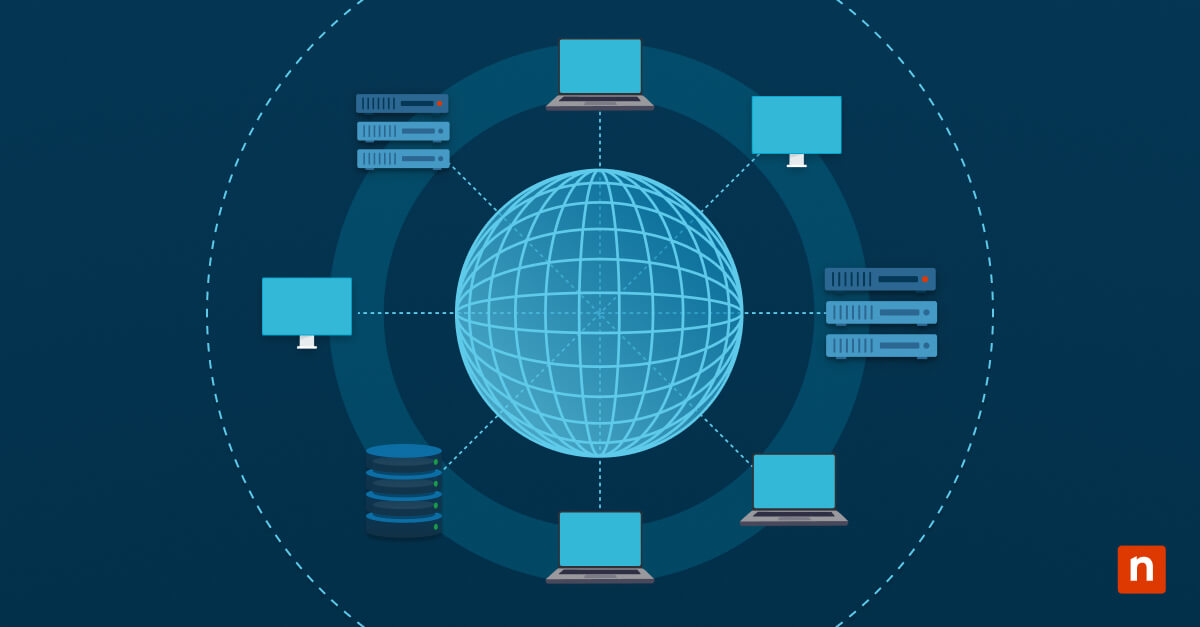In this article, we’ll take on the intricacies of IT change management, providing you with a roadmap to navigate transitions smoothly and enhance the resilience of your IT infrastructure.
Whether you’re a seasoned IT professional or a newcomer to the field, our guide offers a wealth of knowledge, encompassing essential strategies, best practices, and expert insights to empower you in fostering a culture of change readiness within your organization.
As we delve into the depths of IT change management, we’ll explore the significance of meticulous planning, effective communication, and rigorous documentation.
From understanding the fundamental principles to implementing advanced methodologies, this guide aims to equip you with the knowledge and skills needed to drive positive transformations in your IT environment.
Embrace change with confidence as we unravel the keys to successful IT change management, ensuring your organization remains agile, secure, and prepared for the challenges of today’s dynamic technological landscape!
What this article will cover:
- What is IT change management?
- IT Change management’s role in risk mitigation
- Why organizations need IT change management
- The IT change management process
- 10 IT change management best practices
What is IT change management?
IT change management is a systematic set of processes that organizations employ to control and manage modifications or alterations to their information technology systems. (These include IT systems, infrastructure, and processes.)
The primary objectives of Information Technology Change Management revolve around minimizing risks, avoiding disruptions to business operations, and promoting a transparent and well-organized approach to IT transformations.
This discipline is essential in the dynamic realm of IT, where updates, upgrades, and alterations are both commonplace and necessary.
Objectives of IT change management
Risk mitigation
One of the central goals of IT change management is to mitigate risks associated with implementing changes to IT systems.
This involves a thorough assessment of potential dangers to existing systems, data security, and overall business operations. By identifying and understanding these risks, organizations can develop strategies to minimize the likelihood of negative impact.
Business continuity
IT change management aims to implement changes with minimal disruptions to daily operations.
The business continuity objective involves careful planning, scheduling, and communication to ensure that the impact on productivity is minimized, and critical business functions continue to operate smoothly during and after the implementation of IT-related changes.
Transparency and documentation
Clear documentation is a key component of IT change management. Detailed records are maintained for every change, outlining its purpose, scope, potential risks, and the steps involved in the implementation process.
This transparency ensures that all stakeholders have access to relevant information, helping with decision-making and fostering accountability.
Effective communication
Communication is a key part of a successful IT change management framework. The process involves informing and involving stakeholders at various levels, including employees, IT teams, and management.
Effective communication ensures that everyone is aware of the impending changes, understands their significance, and is prepared for any adjustments that may be required in their roles or processes.
Optimized resource utilization
IT change management systems and processes seek to optimize the utilization of resources, including human resources, time, and budget.
Through careful planning and coordination, organizations can ensure that technology changes are implemented efficiently without unnecessary delays or budget overruns. This objective contributes to overall operational efficiency and cost-effectiveness.
Regulatory compliance
Meeting IT regulatory requirements is a crucial objective, especially in industries where compliance with data protection, security, and privacy regulations is mandatory. IT change management ensures that changes are implemented in accordance with these regulations, reducing the risk of legal and financial repercussions.
How does IT change management contribute to risk mitigation?
IT change management is a crucial component in the overall risk management strategy of an organization. It contributes significantly to risk mitigation by implementing structured processes and controls to identify, assess, and manage potential risks associated with changes to IT systems. Here are several ways in which IT change management helps mitigate risks:
Risk identification and assessment
Before implementing any IT change, Change Management involves a comprehensive risk identification and assessment process. By systematically identifying risks associated with a proposed change, organizations can develop proactive strategies.
Prioritization of changes
Not all changes carry the same level of risk. IT change management protocols help to prioritize changes based on their potential impact on the organization. High-risk changes may undergo more rigorous testing and heightened scrutiny during the planning and implementation phases, reducing the likelihood of unexpected issues.
Risk mitigation strategies
Change Management plans typically include strategies for mitigating identified risks. By having predefined strategies, organizations can respond quickly and effectively to potential issues.
Testing and validation
Rigorous testing is a fundamental aspect of IT change management. By thoroughly testing changes before implementation, organizations can identify and address potential issues in a controlled environment.
Change freeze periods
In certain situations, organizations may implement change freeze periods during critical business times or when system stability is crucial. This means that no significant changes are allowed during these periods to minimize the risk of disruptions.
Stakeholder communication
Change Management includes clear communication with stakeholders at various levels. Well-informed stakeholders are better equipped to identify and report potential issues, contributing to early risk mitigation.
Documentation and audit trails
Comprehensive documentation is a key component of IT change management. This documentation serves as an audit trail, allowing organizations to review the entire change process, identify any deviations, and learn from past experiences to continuously improve risk mitigation strategies.
Continuous improvement
IT change management incorporates a feedback loop for continuous improvement. After each change is implemented, a post-implementation review is conducted to assess the success of the change and identify areas for improvement.
Why organizations need IT change management
IT change management is an essential framework for businesses, providing a structured approach to navigate the challenges associated with IT system modifications. One key aspect is risk mitigation, where the process aids in identifying, assessing, and proactively managing potential risks to minimize disruptions and adverse impacts.
Moreover, regulatory compliance is ensured, particularly in industries with stringent data protection and privacy regulations, safeguarding businesses from legal repercussions.
Resource optimization is another crucial benefit, as IT change management facilitates effective utilization of human resources, time, and capital by careful planning and coordination.
Minimizing downtime is achieved through meticulous planning, testing, and communication, ensuring that IT changes do not unduly disrupt business operations. Improved communication is encouraged throughout the process, enhancing collaboration and understanding among various stakeholders.
Additionally, the framework establishes clear accountability and responsibility, ensuring that individuals or teams are responsible for specific aspects of the change process, thereby enhancing transparency.
Continuous improvement is inherent in IT change management, with post-implementation reviews providing valuable insights for refining strategies over time.
Enhanced security is a critical outcome, as changes are rigorously assessed for potential security risks, and security measures are integrated to protect against cyber threats. Cost control is achieved by optimizing resource usage, preventing budget overruns, and minimizing financial impacts associated with poorly managed changes.
Finally, ensuring business continuity is a fundamental goal, where IT change management plays a pivotal role in maintaining the continuous operation of critical business functions, even in the face of IT changes.
The IT change management Process
The IT change management process is a systematic and structured approach that organizations employ to effectively plan, implement, and control changes to their IT systems. This process is essential for minimizing risks, ensuring compliance, optimizing resources, and maintaining the stability and security of IT environments. Here, we delve into the six stages of the IT change management process, offering a comprehensive understanding of each phase from change request to implementation to after-action review.
Phase 1: Change request
The Change Request stage marks the beginning of the IT change management process. During this phase, individuals or teams submit requests for modifications to the IT environment. These requests may arise from various sources, such as system enhancements, bug fixes, or updates to meet evolving business requirements.
Phase 2: Change evaluation
Once a change request is submitted, it undergoes a thorough evaluation. This stage involves assessing the potential impact of the proposed change on existing systems, identifying associated risks, and determining the feasibility. The evaluation aims to provide a clear understanding of the change’s implications and helps in deciding whether to approve, modify, or reject the request.
Phase 3: Change planning
After a change request is approved, the Change Planning stage commences. In this phase, detailed plans are developed, outlining the steps, resources, and timelines for implementing the change. The planning process also includes identifying potential risks and developing strategies to mitigate them, ensuring a well-prepared approach for the upcoming change.
Phase 4: Change approval
Change Approval is a critical stage where the proposed change undergoes scrutiny from relevant stakeholders. This often involves obtaining approvals from key decision-makers, ensuring alignment with organizational goals, compliance with regulations, and confirmation that the change aligns with the broader IT strategy.
Phase 5: Change implementation
With approvals in place, the Change Implementation stage begins. This phase involves executing the planned changes in the IT environment. Rigorous testing is conducted to ensure the change functions as intended, and contingency plans are in place to address any unforeseen issues. Effective communication is paramount during this stage to inform stakeholders about the changes and manage expectations.
Phase 6: Post-implementation review
The final stage of the IT change management process is the Post-Implementation Review. After the change is implemented, a comprehensive review is conducted to assess its success, identify lessons learned, and gather feedback. This feedback loop contributes to continuous improvement, refining future change management strategies based on real-world outcomes.
10 IT change management best practices
Implementing IT change management best practices is crucial for organizations to successfully navigate the complexities of technology transformations. Here are our top ten best practices in IT change management:
1. It’s all about planning
Thorough planning is foundational to successful change management. This involves assessing the scope of the change, identifying potential risks, and developing a detailed plan that outlines tasks, timelines, and resource requirements. A well-structured plan facilitates smoother implementation and reduces the likelihood of unforeseen problems.
2. Communicate and collaborate
Ensure that all stakeholders are informed about the upcoming changes, the reasons behind them, and any actions they need to take. Transparent communication fosters understanding, minimizes resistance, and contributes to a collaborative environment.
3. Know the impact
Conduct a comprehensive assessment of the impact the proposed change will have on existing systems, processes, and stakeholders. Understanding the potential consequences allows for proactive risk mitigation and ensures that the organization is well-prepared for the implications of the change.
4. Test and verify
Prioritize rigorous testing before implementing any change in the production environment. Testing helps identify and address potential issues, ensuring that the change functions as intended and does not introduce new problems. Different testing phases, including unit testing, integration testing, and user acceptance testing, contribute to a robust change management process.
5. Create an approval process
Establish a well-defined process for obtaining authorization and approval for changes. This involves obtaining the necessary approvals from key stakeholders, ensuring that the change aligns with organizational goals and complies with any regulatory requirements. Clear authorization processes contribute to accountability and transparency.
6. Don’t neglect documentation
Maintain detailed documentation throughout the change management process. Document the change request, planning details, testing results, and implementation steps. This documentation serves as a reference point for future changes, aids in post-implementation reviews, and contributes to knowledge sharing within the organization.
7. Assemble a Change Control Board (CCB)
Form a Change Control Board (CCB) consisting of key stakeholders responsible for reviewing, approving, and overseeing changes. The CCB ensures that changes align with organizational objectives, adhere to best practices, and are consistent with the overall IT strategy.
8. Make sure rollback plans are in place
Develop detailed rollback plans in case issues arise during or after the implementation of a change. Having a well-defined process for reverting to the previous state helps minimize downtime and disruptions, providing a safety net for unforeseen challenges.
9. Conduct a post-implementation review
Conduct a thorough post-implementation review after each change. Assess the success of the change, identify areas for improvement, and gather feedback from stakeholders. This feedback loop contributes to continuous improvement and enhances the organization’s ability to manage future changes more effectively.
10. Don’t forget training and support
Provide training and support to users and teams affected by the change. Addressing concerns, providing resources, and ensuring that individuals are comfortable with the new processes or technologies contribute to successful change adoption.
By incorporating these best practices into your organization’s IT change management processes, you can enhance your ability to adapt to technological advancements, minimize risks, and foster a culture of continuous improvement in managing changes to your IT environments.
In summary
Embracing IT change management is not just a procedural necessity — it is a strategic imperative for organizations navigating the dynamic landscape of technology. The six stages of the IT change management process, from change request to post-implementation review, provide a roadmap for systematically planning, implementing, and controlling changes to IT systems. Key best practices, such as comprehensive planning, clear communication, rigorous testing, and post-implementation reviews, underscore the importance of a well-structured approach. By adhering to these best practices, organizations can minimize disruptions, optimize resource utilization, and foster an environment of adaptability and resilience.
Effective IT change management contributes to myriad aspects of the organization, from regulatory compliance to business continuity. In today’s fast-paced technological landscape, where change is inevitable, organizations that embrace IT change management are better positioned to thrive.
For a visual overview of these concepts, see the video version of this guide: What is IT Change Management.








